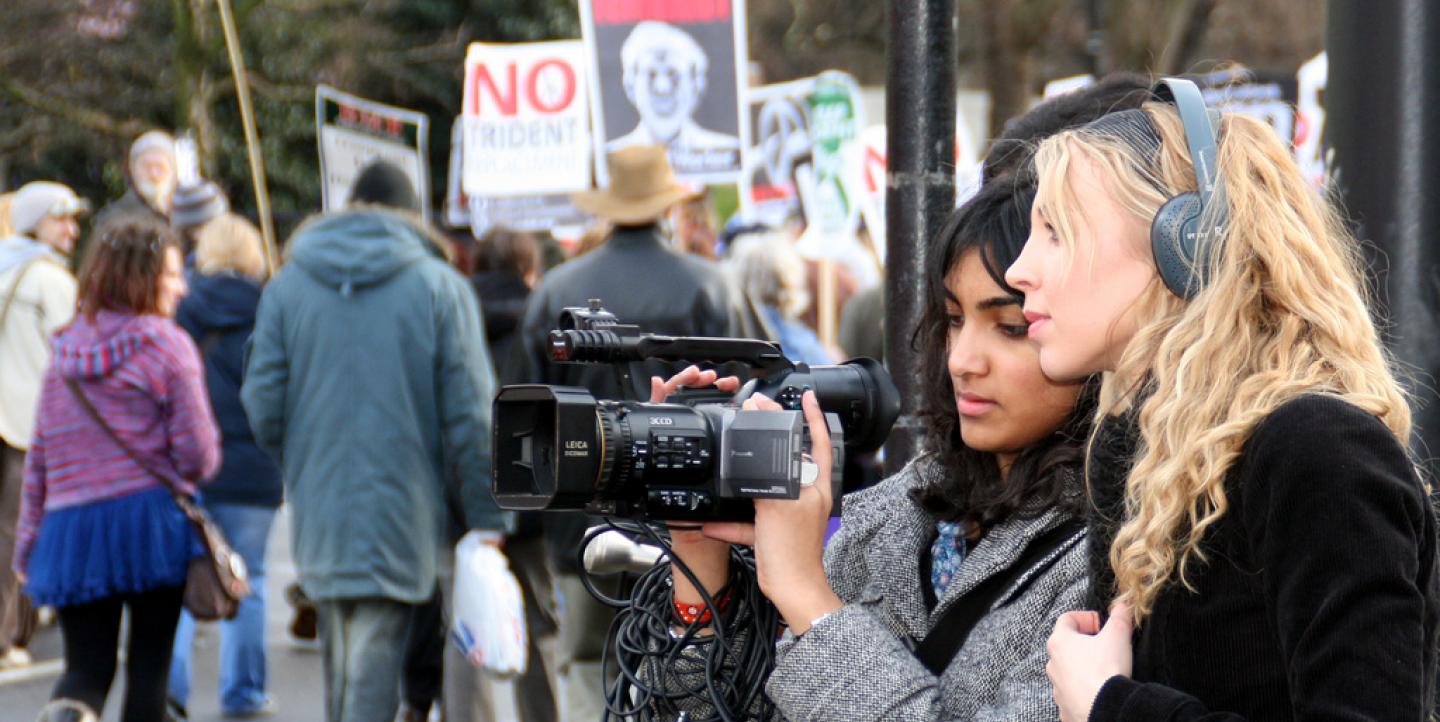As a video journalist, your goal should be to get closer to people who will help you tell the story. Their voices will help you connect with audiences and enhance the quality of your video.
“It’s the time we spend with our subjects that allows us to access their lives,” award-winning video journalist and filmmaker Pierre Kattar said while speaking to a group of visiting journalists from ICFJ’s Digital Path to Entrepreneurship and Innovation for Latin America program. “As a video journalist, I’m just the medium. I don’t create this stuff; I just capture it.”
“Great video is anything that shows emotion, change or puts you in a scene,” Kattar said.
While finding the right subjects and dropping into the right moments is crucial to storytelling, Kattar also encourages video journalists to consider other aspects of production:
Video length
When editing and producing a video, many reporters struggle with the appropriate length for a video.
“With the time limit, just use your best judgment,” he said. “There’s no magic number. If you can tell a story in one minute, then do it — but don’t feel bad if you need five minutes.”
Sound quality
While the exact length of a video can be changed according to your discretion, there’s one part of your video that should never be compromised: audio.
“Sound is king,” he said. “If your video had bad sound, people won’t watch it.”
To ensure your video’s audio isn’t ruined by the wind or other background noises, it’s crucial to use headphones while recording in the field. When filming interviews with individuals, always do so in a quiet, well-lit place whenever possible. Lastly, always try to get as close to the sound as possible.
Interactive stories
One of the best ways to draw audiences into your story is to create a piece of video journalism that’s fully interactive, Kattar explained. Unlike the ‘lean out’ nature of television journalism in which viewers passively watch what’s presented to them, online journalism allows the viewer to engage and interact with a story like never before.
Kattar listed a few examples of stellar interactive journalism, including The Globe and Mail’s “Behind the Veil” piece and The San Jose Mercury News’ “Uprooted.”
The key to creating engaging interactives is knowing when to show restraint, he said. While digital media offers infinite possibilities for crafting a piece of journalism, it’s important to only use a few of the many tools at your disposal to avoid overwhelming your audience.
“Whenever you add something, you take something away,” Kattar said.
Main image CC-licensed by Flickr via David Jones 大卫 琼斯.

